In Development: How Kelley Janae Gets Her Guitar To Sing
“For me, when I’m playing leads, I always try to make sure it’s conversational.”
Kelley Janae’s guitar journey began at 7 years old with an electric guitar and an avid appreciation for Prince—both gifted to her by her parent’s in Nashville, TN, where she was born and raised. Eventually, her love for music bloomed into a career as a professional guitarist and a flourishing producer within hip hop and R&B, taking her from performing professionally around Nashville to a viral sensation.
As a teenager, Janae performed professionally with major acts including Keith Urban and Gary Jenkins. She studied guitar in high school alongside Melanie Faye—”my guitar buddy” she affectionately calls her—and the two sat next to each other in class and even had a guitar quartet together. It was around this time that Janae’s interest in audio production emerged, and in 2017 she began posting covers on her social media with bumpin’ beats and serenading guitars that caught the attention of heavyweights like DJ Khalid and Kehlani.
“With my approach with covers, it’s always important to stick to the fundamentals of the original song,” says Janae. “But I love to figure out how I can bend the rules a little bit. I’m always influenced by different styles of music—latin, jazz, rock—so I try to figure out how to apply those same concepts.”
These days, Janae is studying music business at Middle Tennessee State University—with a minor in business administration and an emphasis on entertainment law—writing on her own mixtape, and working on getting paired as a producer with other musicians. Most recently, she collaborated with acclaimed producer and musician Mike Will Made It on Cantrell’s 2020 single “Ice Cold Chilli.”
In partnership with Marshall for our In Development series, we spoke with Janae about her early days in producing, the benefits of social media, and how she gets her guitar to sing.
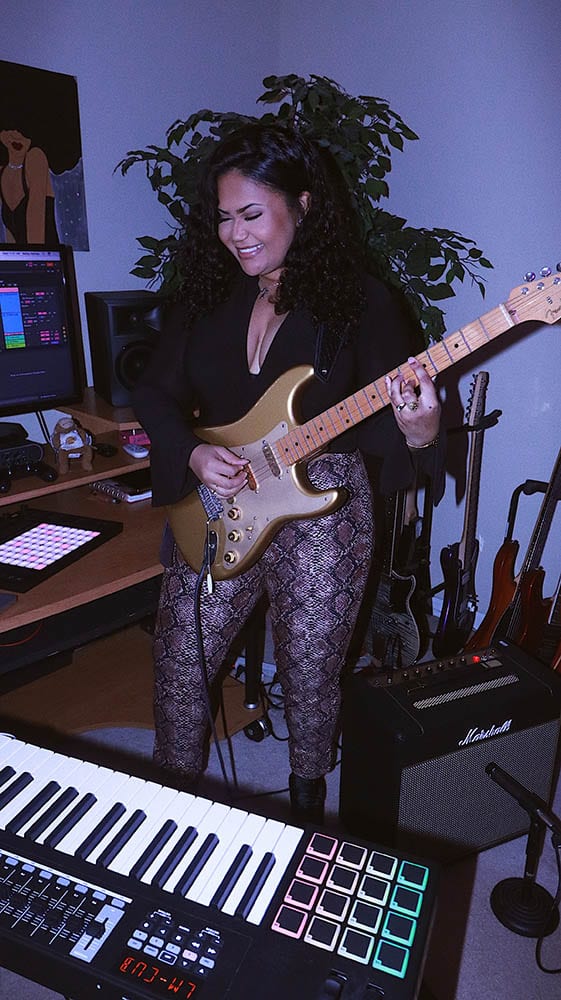
To start, I’m wondering what the early days of playing and learning guitar were like for you.
When I first picked up the guitar, I was around 7. I got a Epiphone SG Special for Christmas, and I didn’t know what I was doing—I was just noodling with it more than anything. I had an interest in exploring music, and figuring out what was being played in a song. I was self-taught for about two years, and spent my time figuring out what exactly I should be playing. Of course, I had no direction [laughs]… I was slowly figuring out how to play the guitar, and more and more I was obsessed with Prince, so I started trying to copy whatever he was playing.
And then my elementary school had a nonprofit that gave free instruments to students in public schools, and so of course I joined and that made me fall more in love with music. We played all around Nashville, we played at the Ryman Auditorium—I was probably 9 or 10 the first time I played there—and we did a lot of records. We were a big band, there were probably about 15 of us, and that lasted until I was in 8th grade I believe. Four of us from that band broke off, and we started doing our own thing, and that lasted for a few years. And when I went to high school I attended Nashville School of the Arts, and of course I went for jazz guitar.
When you got interested in producing, what did that look like? Did your high school offer classes, or were you learning on your own?
Throughout high school is when I got heavily into audio production. I had another band—we were the go-to high school band, all instrumental, I was the lead guitarist—and we played around town, with different artists… we were just that band. And my high school had ensembles, so this was the band for the pop ensemble. We played all the Motown records, all the standards. Our school actually had a studio next to the guitar room, and one of my good buddies, Marcus Warner, would be in that studio the whole entire day. It was interesting to me, I would watch him, and sometimes he would record us… the process was cool. I was already getting into the production side of things: I was looping on my guitar with a DigiTech RP255 effect pedal, and it had like 100 different presets and a 20 second loop. There was nothing detailed about it, if you messed up you had to start all over, and I became fascinated with doing that. And then I moved into Pro Tools in high school and started picking up producing, making beats.
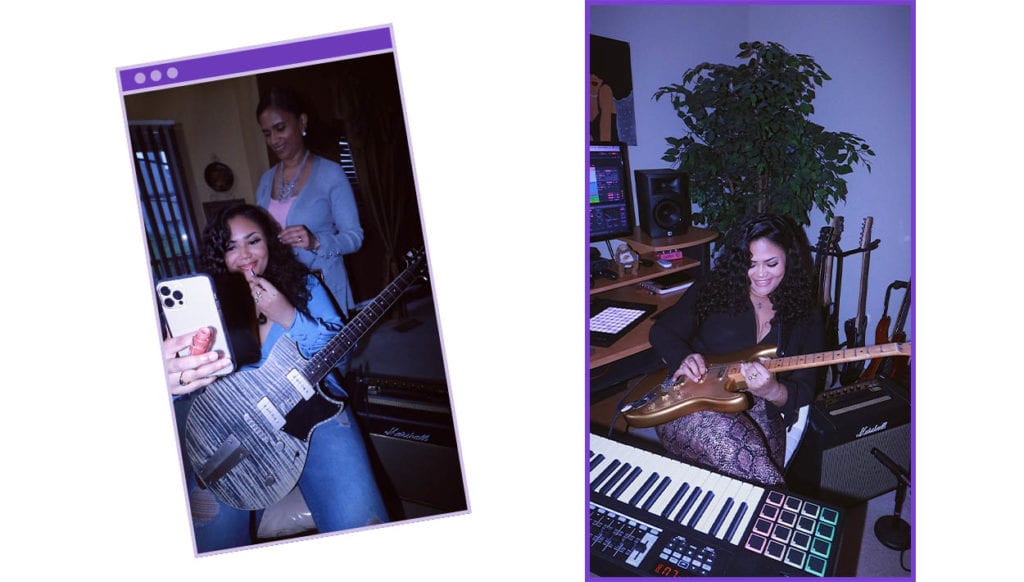
Sharing your covers and songs on social media has brought attention from DJ Khaled, Kehlani, and others. What brought you to sharing your music on social media, and how do you feel it has shaped your career?
When I was about 12 or 13, my parents had bought me the DigiTech RP255. I was fascinated with trying to create a loop, and trying to figure out how to make a beat essentially—I didn’t realize that’s what I was doing at the time. I’d use my guitar as a drum or bass, to emulate different sounds. I was so fascinated with that that I took it to YouTube my freshman year of college. That progressed further into beats and the whole production thing. My first viral video was Lil Uzi Vert’s XO Tour Llif3 on Snapchat. I got all these messages, never understood what a viral video was, and that just pushed me to want to get more into production. I think the first person who actually acknowledged my guitar playing was August Alsina, and that kinda sparked that fire underneath me.
I remember when DJ Khalid saw my cover of “Wild Thoughts” and he posted it on his Instagram—it just went berserk, it went everywhere. It was all over Twitter, it was really all over Instagram, and then of course Snapchat, because of the whole XO Tour Llif3 thing. DJ Khaled is probably part of the reason as to why I have a platform. [Laughs.]
Social media, for me, I initially was using it to make connects. I was playing guitar professionally around town, but I was like, “I want more than this.” I didn’t want to just play at bars and events and things going on around Nashville. I wanted more, and I knew I needed to be in the forefront. Being on social media allowed me to network, get in tune with different musicians, get gigs in different cities, and be able to connect with different people and actually collaborate or get feedback, and meet with other producers. It helped me expand a little bit more.
What is your current gear setup for achieving your tone?
I have a ton of little gadgets, but I’m so simple with things. I have a Boss GT-100 effects processor that I got when it first came out, and I’ve been obsessed with it ever since. I’ve customized every preset—there’s over 200 sounds in there, I’ve customized every single one—and that’s literally all I use. Often I’ll go through an amp and record it that way, or I might record it directly into my interface. It’s got such a beautiful tone, I don’t know what I’d do without it… [laughs] ‘cuz that’s my tone.
My go-to guitar is a ‘59 American Strat that I’ve been so obsessed with. I’ve got a ton of other guitars, about 14, but that’s my main one. I love it’s versatility. If I want to play R&B, or if I want to go play a jazz set, or if I want to go play some metal with friends—I can use it for anything.
I’ve been using this Marshall SV20C Studio Vintage combo amp for the past few months, and I’ve really been enjoying it. I love it’s level of versatility. For me, I love to be able to get different tones: I can get that nice clean, warm tone as well as that nice distorted sound without it sounding too grainy or too closed in or mushed together.
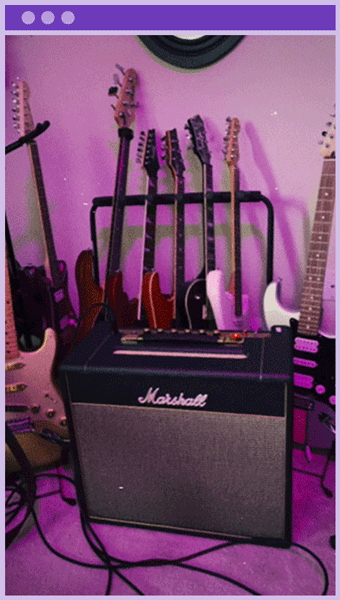
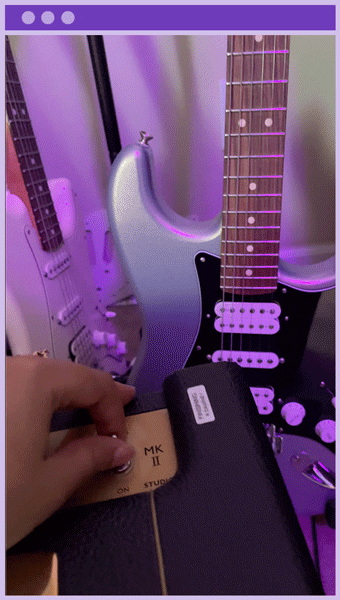
As a non-vocalist, you really make your guitar sing. It’s pretty incredible. Can you talk about how you approach playing those leads?
For me, when I’m playing leads, I always try to make sure it’s conversational. Say we’re having a conversation, a casual talk—there’s different variants in the midst of someone talking. Things might escalate, you might be arguing, you might be laughing and having a really good time, or things might be chill and laid back… So, I think of how someone is listening to my playing, knowing that you can’t shred 24/7. Someone needs to retain what you’re playing; I want you to feel exactly what I’m playing, and understand it. Sometimes, when you’re selective with your phrasing or the way you’re playing things, that can have more of an impact on the listener as opposed to just trying to do something that sounds really cool.
Also, you know, with a singer, often there’s a three-part harmony—I might do that with guitar. I have an effect that I can add three different guitar voicings, and I might throw that in there. I don’t have to add a whole bunch of notes, it might sound a little bit better, a little easier on the ear. And then you can differentiate between a guitar solo and a lead guitar playing the vocal verse.
You recently produced Cantrell’s “Ice Cold Chilli” with mentorship from Mike Will, and told Teen Vogue you were working with other musicians and producers on your own music. How does collaboration inform your writing/producing style?
Every single time I go into a situation where I’m collaborating with someone, I always try to go in with an open mind. My perception of things may be different from whoever else may hear it. For instance, when I was being mentored by Mike Will, I had a completely different vision for the song than he did, so to be able to see how someone can expand on your idea and turn it into a much larger production than what I could have done is always such a learning experience.
One of the lessons I learned with Mike Will is to always make sure your drums sound, and I hate to sound so informal, but make sure they sound like their bumpin’—something you can dance to, and you can feel it as opposed to having a bunch of mumbo jumbo within a beat. Sometimes simplicity is more valuable than trying to add a whole bunch of stuff.
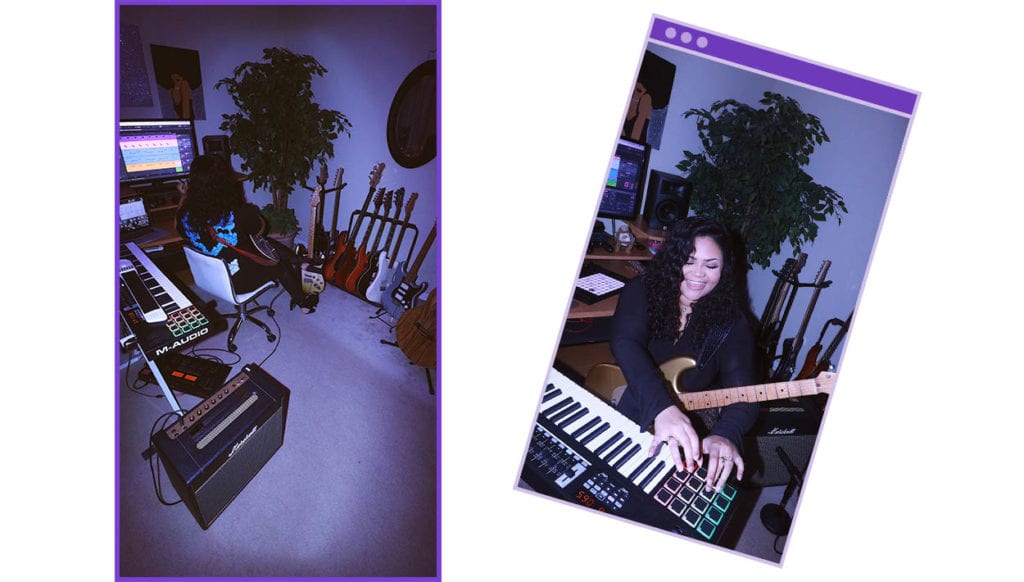
I can imagine how—well, I don’t know, maybe for you this wasn’t an issue, but for me personally, I would feel so intimidated to bring an idea to Mike Will and be like, “Well… what do you think?”
[Laughs and nods head.] Considering as much of a heavyweight as Mike Will is—you know, he’s produced for Kendrick Lamar, Beyoncé, and so many heavyweight rappers and artists in the industry as a whole—the whole pressure for me was like, okay, you gotta make something that’s gonna satisfy Mike Will. I need to have Mike Will in there, you know, moving his head to my beat. And so that was my biggest challenge: trying to come up with something that would sound good and also represent who I am as well—and pleasing Mike Will, too.
You’re currently studying music business, with an emphasis on entertainment law. I’d love to hear about what you’d like to do with this degree.
I’m big on contracts. I like being able to determine what’s going on, and what an artist is receiving. For me, as an artist managing myself and doing all of this as a one-woman show, I think it’s important to really know what you’re getting yourself into, what you’re signing over, and knowing how to maneuver over all.
I’m not a vocalist, so to say, but I play instruments, I produce… I do everything behind the artist. I think it’s important that we know [all of this] as well. It’s not completely about the singer or the main artist—we’re just as valuable.
As a contemporary and up-and-coming R&B and pop producer, as well as a guitarist, how do you feel your work pushes the genre forward?
My style of playing, and what I’ve been influenced by over the last 15 years of my playing, it definitely bends the norms within hip hop and R&B. It’s okay to cross genres sometimes, it’s okay to pull from different concepts.
What changes would you like to see made in R&B production?
Definitely more women being represented and acknowledged. You know, there’s a lot of women who do exactly what I do, and we’re not getting the acknowledgments we deserve. Of course it’s changing now, but I think being able to see more women, and not just as artists. We have Beyoncé, we have Taylor Swift, we have Alicia Keys—we have all these amazing vocalists, but we don’t have anyone who’s representing the beatmakers, the actual guitarists, the bass players, the audio engineers. We don’t see those faces within the industry too often. I think having more of that being highlighted definitely needs to happen.
Growing up, and even throughout high school, I didn’t really have anyone I could be like, “I wanna to be like her one day, I wanna be able to produce and make beats and be just like her.” I didn’t see that, I didn’t have that. Of course we had Missy Elliot and WondaGurl, but it just wasn’t enough women being represented. I’m blessed to be a part of this generation that’s changing that now. It’s history.

You May Also Like
No related posts
No related posts
More posts
-
By: Geexella
-
By: Emily Harris
-
By: Fabi Reyna
-
By: Fabi Reyna
-
By: Cynthia Schemmer
-
By: She Shreds Staff
-
By: Celia Sagastume
-
By: Cynthia Schemmer
-
By: Celia Sagastume
-
By: She Shreds
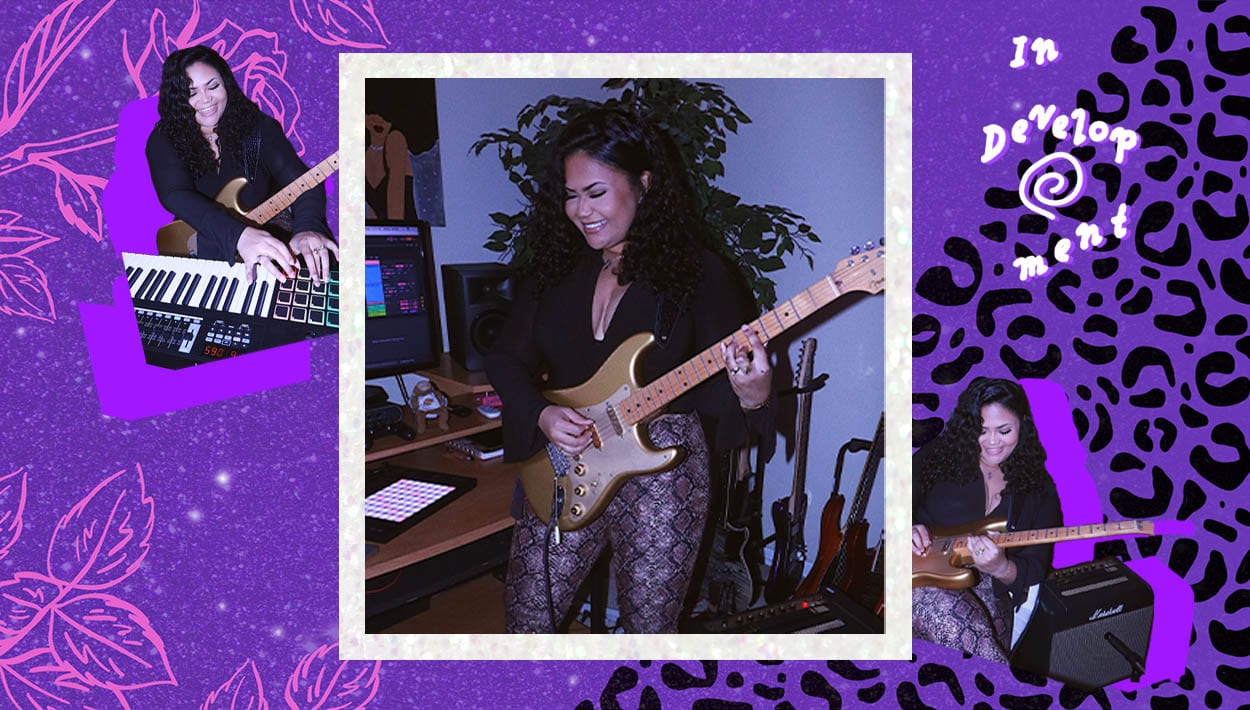
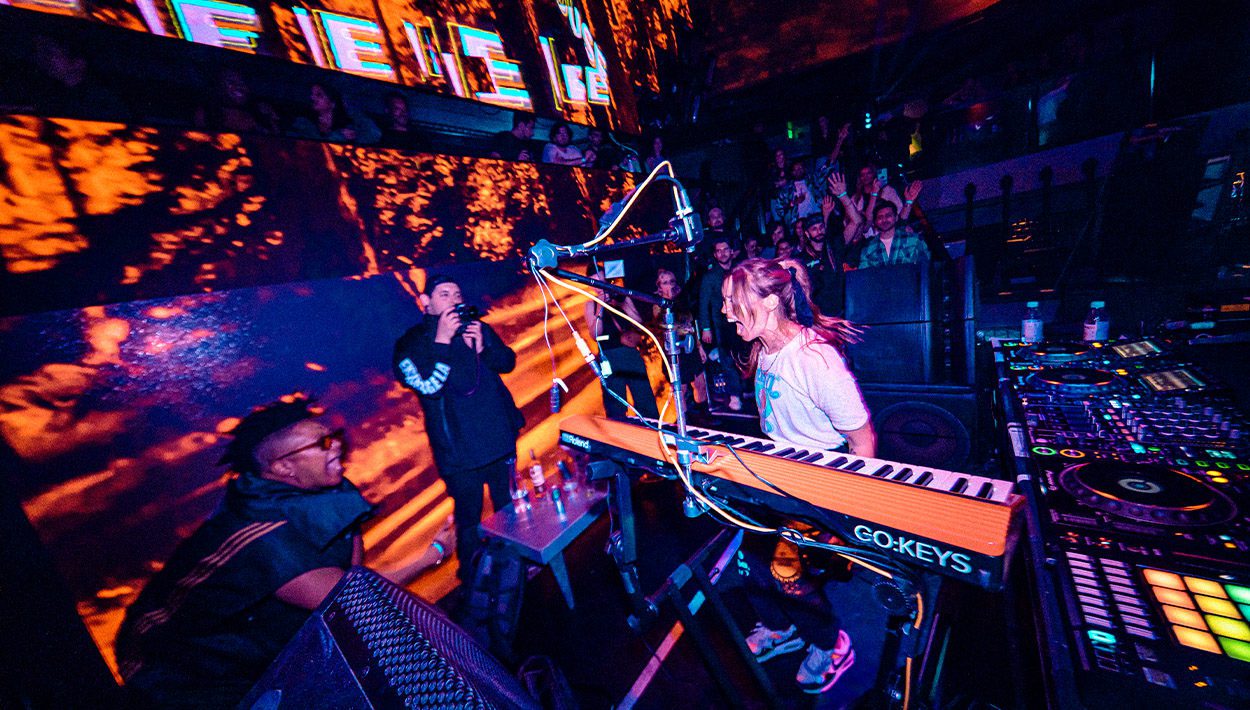
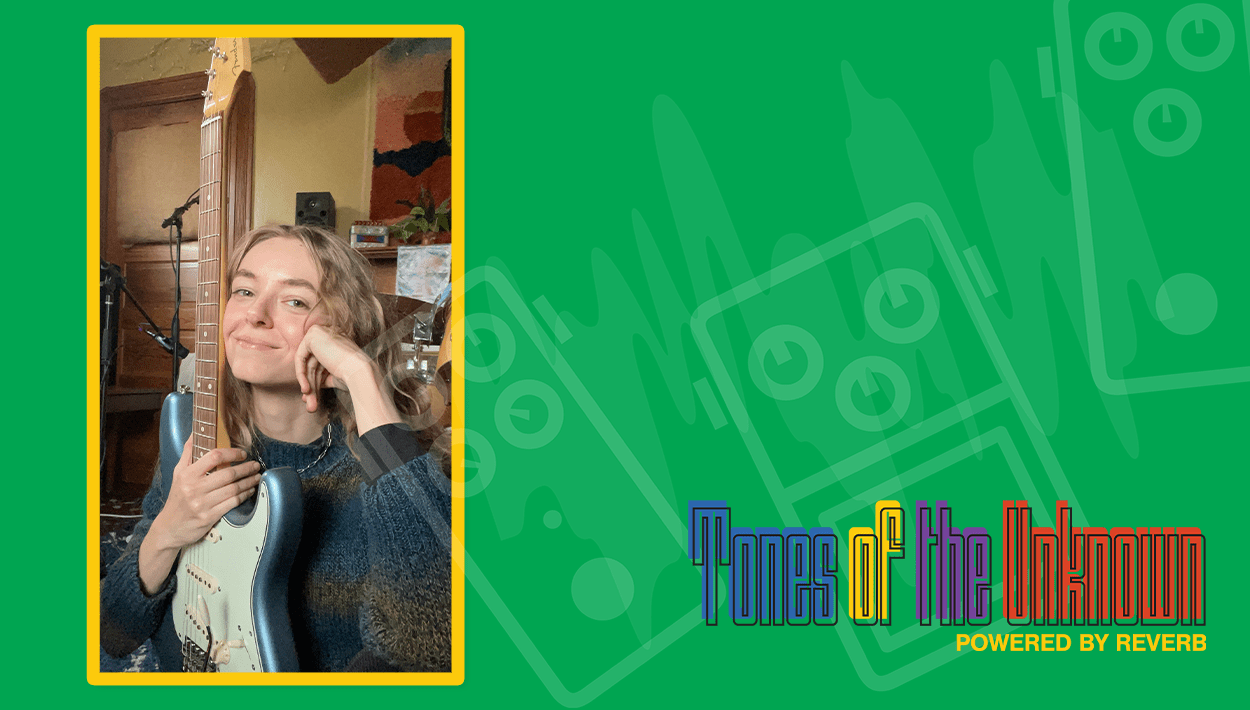
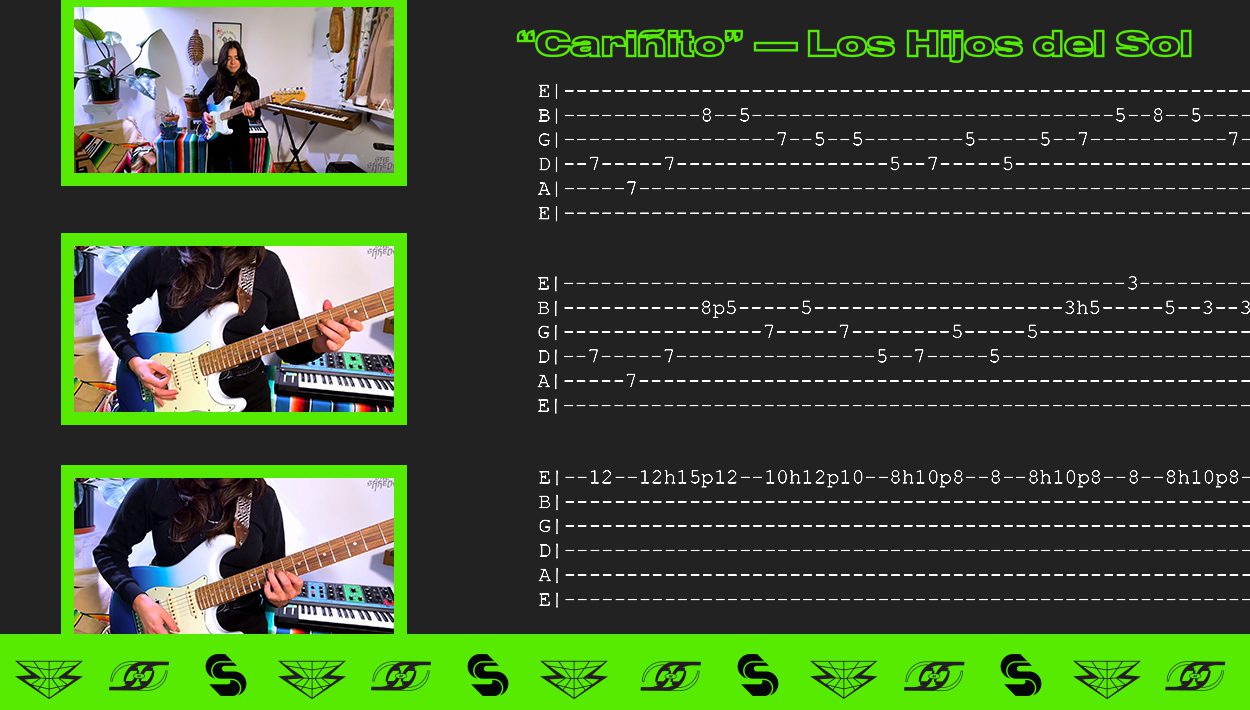
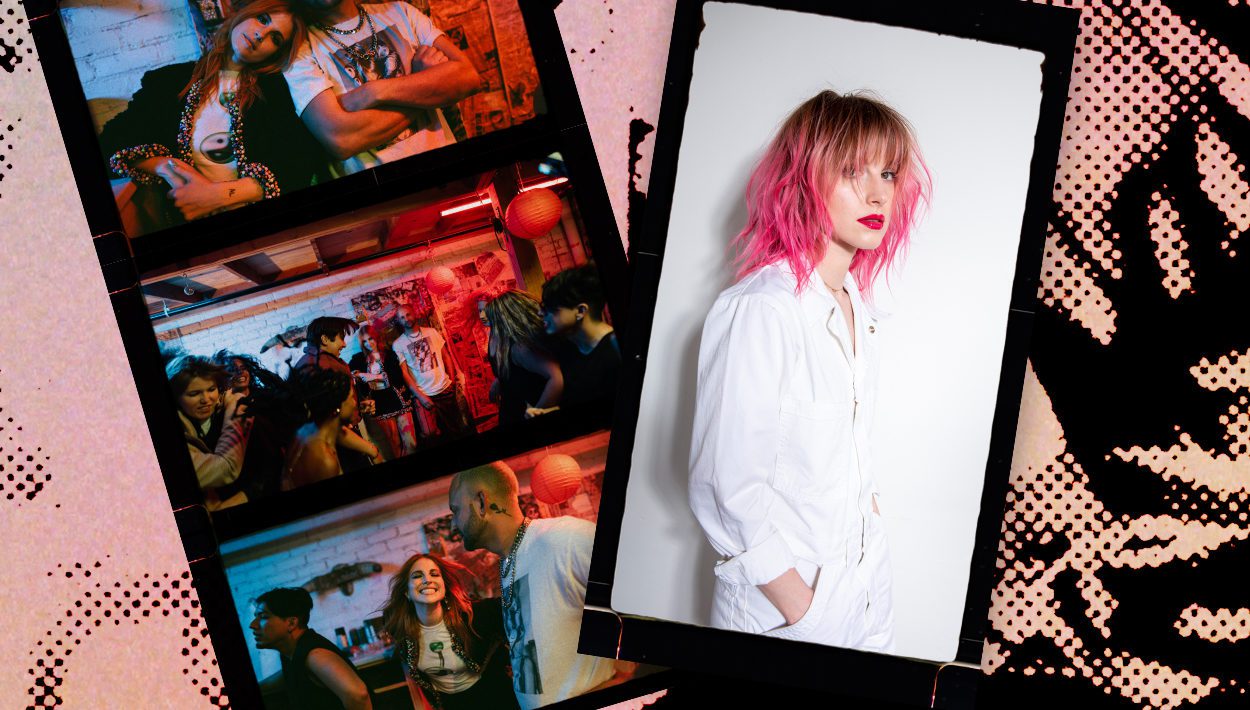

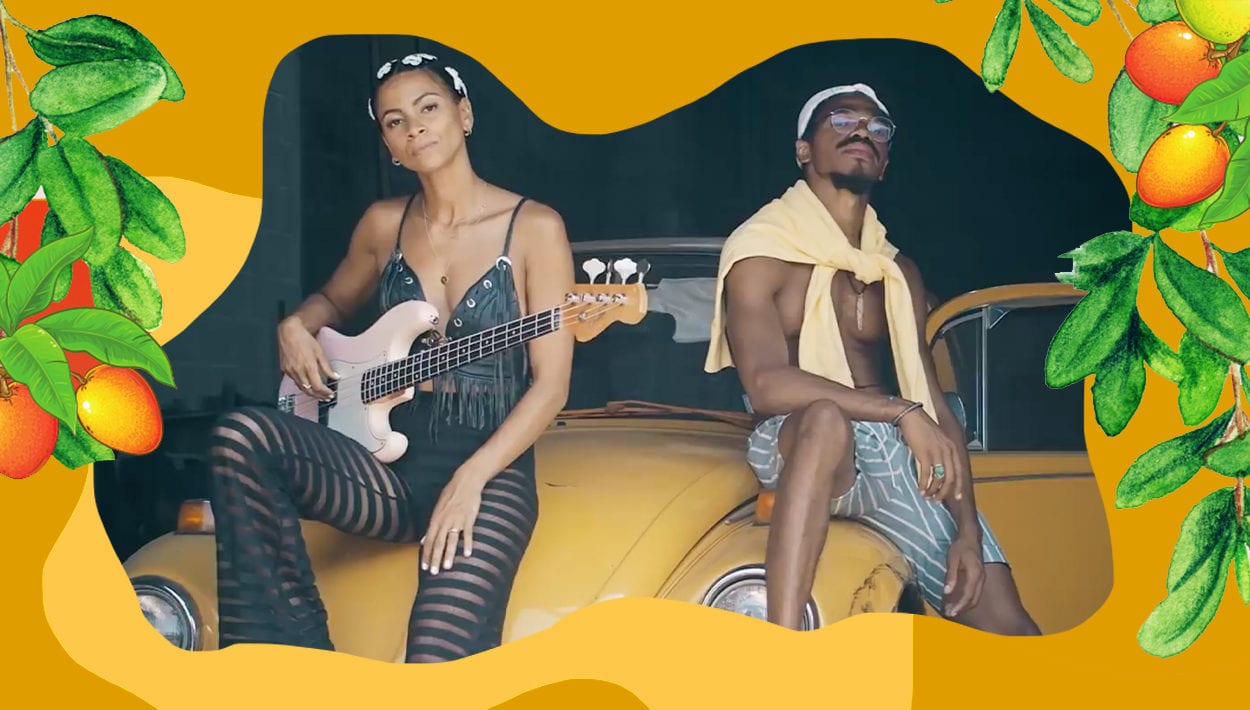
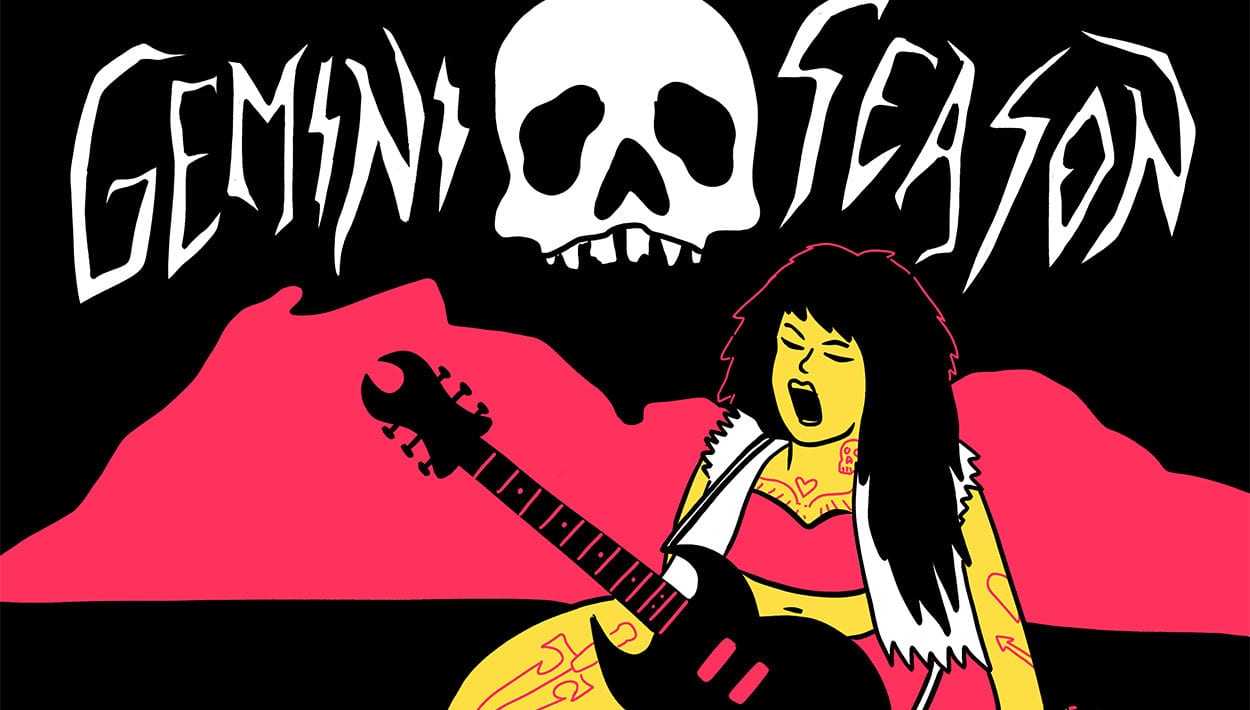

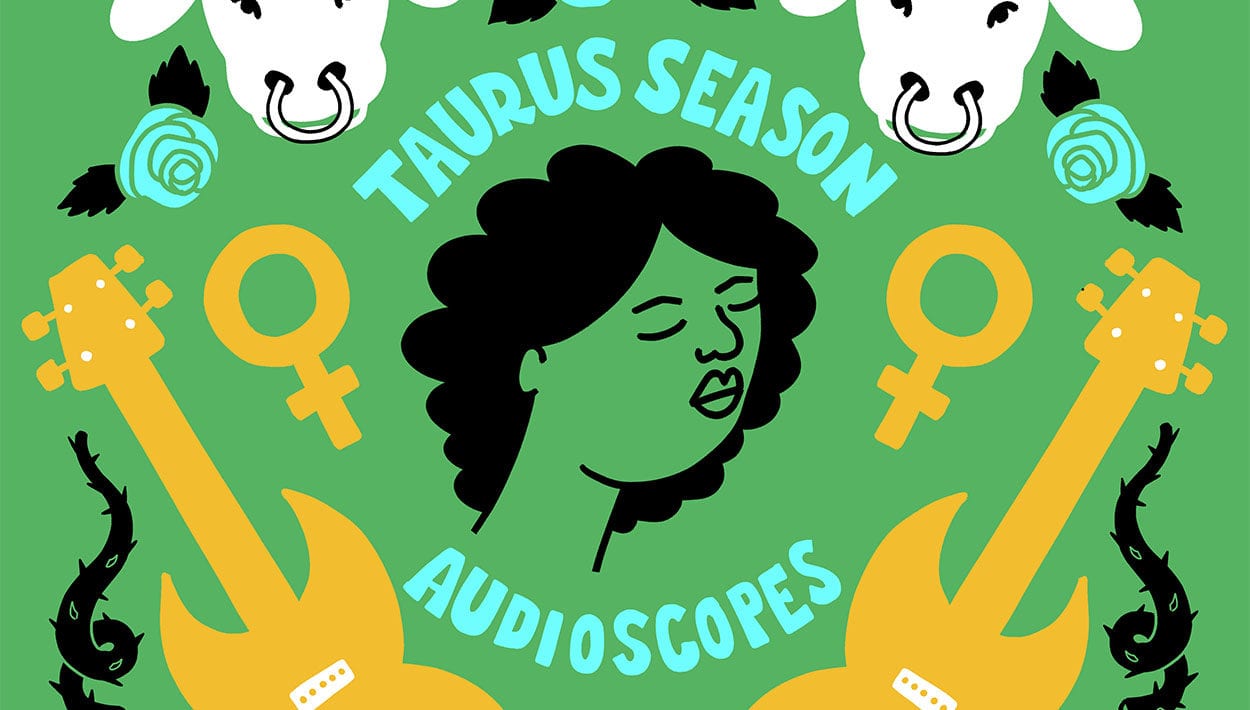



Comments
We assure that we prioritize quality and productivity so that no student has any complaints regarding our website. This is abest writing website for essaysare available to you now.
Comment by Logan on October 16, 2021 at 4:54 amHer music is good.
Comment by Niki on November 17, 2021 at 11:36 pmhey good one
Comment by will james on August 27, 2022 at 4:29 amYou can now access the best writing website for essays.
Comment by drift boss on November 15, 2022 at 7:18 pmthank you
Comment by prase denica on November 15, 2022 at 10:45 pmWe have Beyoncé, Taylor Swift, and Alicia Keys—all of these incredible vocalists—but nobody to represent the producers of the beats, the actual guitarists, the bass players, or the audio engineers among us.
Comment by basket random on December 27, 2022 at 11:11 pmWho are enthusiastic about publishing Education Updates in the public interest with transparency. dpost is an initiative of professional writers who have banded together to provide devoted news coverage of dpost.in current events in India. Our team consists of professional writers and citizen journalists with a wide range of journalism interests.
Comment by dpost.in on April 17, 2023 at 6:17 amHi guys! Some free new experiences in here
Comment by cuphead game on May 5, 2023 at 3:50 amWatching Kelley Janae’s journey in guitar playing is truly amazing! I remember getting my first guitar before taking lessons at UV Studio, a professional recording studio https://studiorecordingchicago.com/guitar-lessons/ . I achieved great success in a short time and had an awesome time honing my skills. Keep rocking, Kelley!
Comment by Ethan on September 21, 2023 at 5:41 amI could see the passion for music in her eyes Fun Games
Comment by Hansey on January 8, 2024 at 1:48 amI’m big on contracts. I like being able to determine what’s going on. Thanks OVO x NHL Chicago Blackhawks Red Varsity Jacket
Comment by Ramsey Morgan on February 27, 2024 at 11:40 am